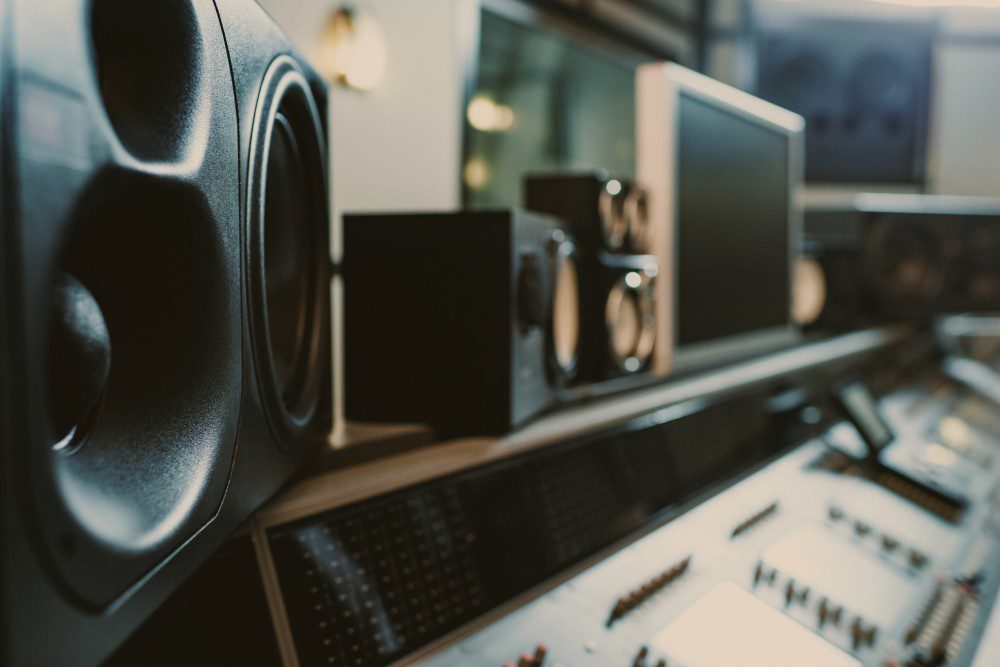Thankfully, recording songs or voice-overs can be done without the need to have a professional studio. You can do it right at home as long and you’ve got the right equipment. With the right setup, the possibility of achieving professional-quality recordings in a dedicated room in your house and even your garage is high.
When you’re a music enthusiast or an audio engineer, one of the most essential parts of your set-up for recording is the studio monitor. After all, how can you ensure that the quality of your record meets your standards without a monitor?
With that said, if you’re on the hunt for the right studio monitor, you ought to know that you’re going to come face to face with a lot of options. Before you make a bad choice, be sure that you’re aware of the following considerations.

1. Decide Between Both: Nearfield Vs. Midfield
There are generally two types of studio monitors that you can choose: nearfield and midfield. Deciding on which one to buy first is your starting point. Each of these two has its respective strengths and weaknesses, so it’s up to you to choose based on the type that suits your set-up at home.
Here’s the main difference between both:
Nearfield monitor: This works well for those of you who record in a small room or home studio. Ideally, this type of monitor is often positioned at least one meter or three feet from you or the listener. It’s also your primary choice if the room you’re in isn’t acoustically treated yet. A nearfield monitor is effective at minimizing any acoustic-related issues.
Midfield monitor: This type has larger amplifiers and powerful drivers. It works great in large rooms. Unlike a nearfield monitor, you can position a midfield monitor anywhere in the room. The downside is that some midfield can be bulky and expensive—not to mention that they consume more power compared to nearfields.
2. Take Note Of The Result You’re Trying To Achieve
Another thing you have to consider is the result you’re trying to achieve with your studio monitor speakers. This means that your chosen studio monitor should be able to provide exactly what you expect it to do for you.
Because there’s a wide range of features you can choose from, the key is to identify only the features that are necessary for you, to bring the results that you desire.
For example, do you already have an amplifier that you want to use? Then you might want to go for a passive setup. On the other hand, if you’re going to start from scratch, you might want to go for an active monitor, which already includes an amplifier.
3. Possibility Of Integrating A Subwoofer
Depending on the genre and the type of recordings you do, you might need to install subwoofers down the road. Because of that, the studio monitor you will buy should be compatible with the subwoofer that you would want to buy later.
4. Stay Within Your Budget
There’s a studio monitor for every budget range, so you don’t have to feel pressured to immediately go for a more expensive one, especially if you’re new to recording. It’s often not about the price of your studio monitor, but the quality. So, a good way to go around with working with your budget is to make the most out of the budget that you’ve intended to spend for your studio monitor.
Each studio monitor has its pros and cons, so you’ve got to balance out the features of your studio monitor for the sticker price it comes with.
5. Ask About The Acoustic Treatment
The acoustic treatment of your studio should complement the monitor you’ll get. Know that some types and brands of monitor work well in certain room and studio setups. You shouldn’t ignore this, especially if you’re serious about recording professional music or uploading your songs on audio distribution platforms to market yourself.
Remember that the acoustic treatment of your studio monitor is going to affect the overall sound quality, so if you can’t even bother including the acoustic treatment of your room as a consideration, then you might not as well buy a new studio monitor.
Don’t forget that the goal of these monitors is to let you hear your recordings with little to no influence from the speakers and the studio itself. If you mismatched the monitor and your setup, the recordings you’ll make might sound off on other devices.
Conclusion
As you can see, there are so many factors that come into play when choosing the right studio monitor that suits your needs. When there are so many that you can choose from, if you don’t know the features that are important to you, then this will only make the selection process even harder. There’s a studio monitor for every budget and one for all the features that are important to you. As you go out and shop, bring this list of considerations as your working guide to end up with the right monitors.







